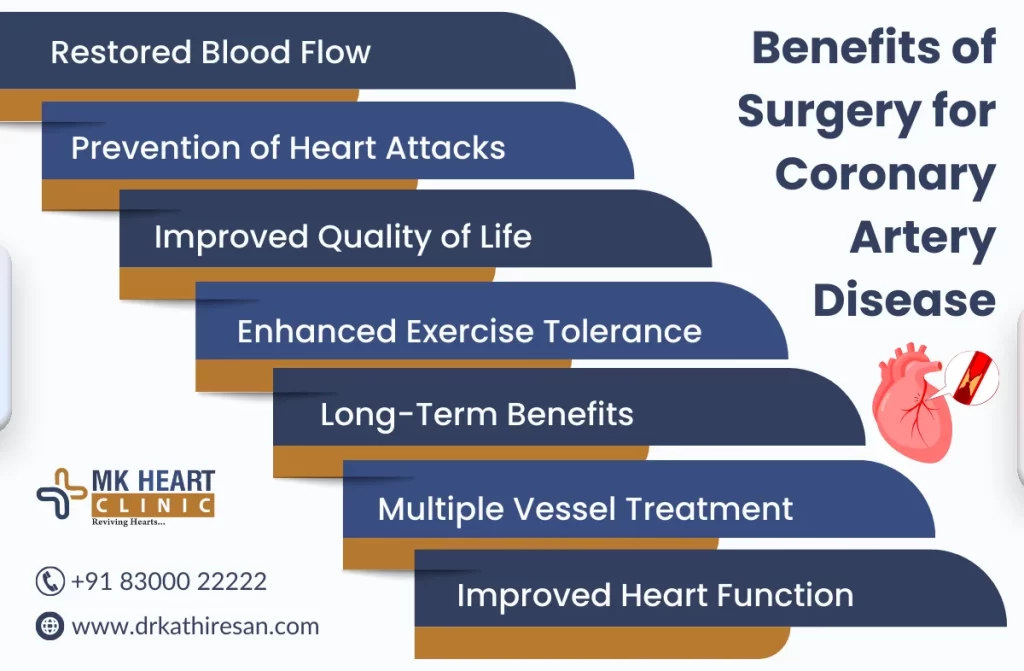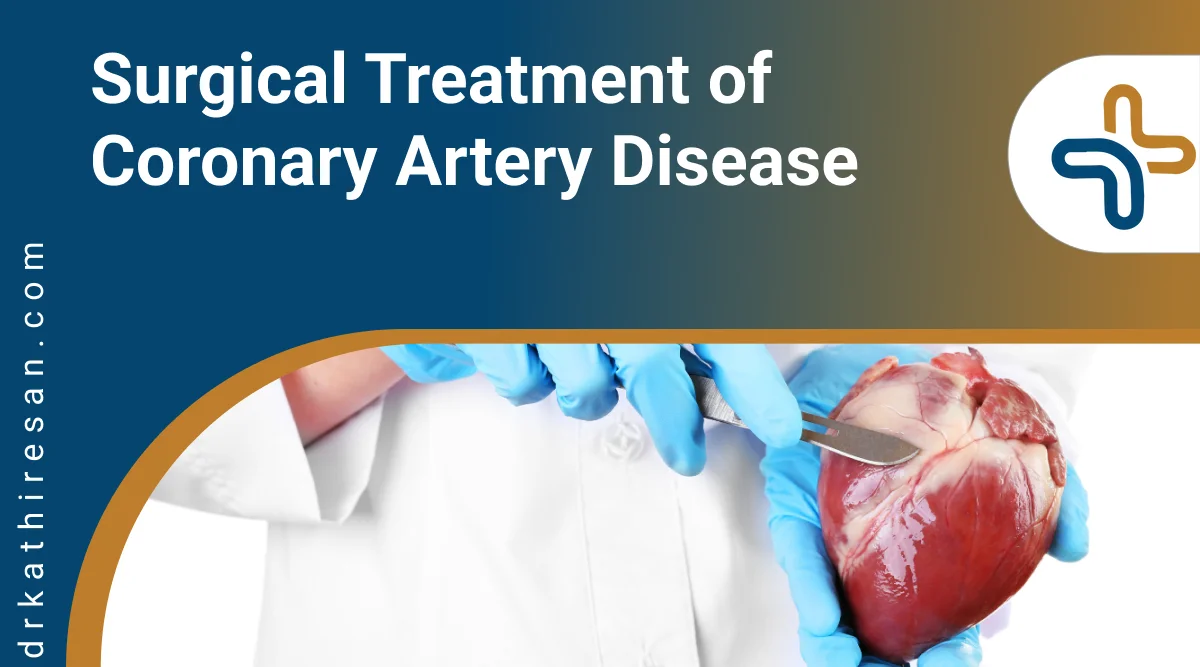Coronary Artery Disease (CAD) is a prevalent heart condition that can significantly impact a person’s quality of life and overall health. While there are various treatment approaches, including medication and lifestyle changes, sometimes surgical intervention becomes necessary to effectively manage and alleviate the symptoms of CAD. In this article, we will delve into the surgical treatment of coronary artery disease, exploring the options available and when they are recommended.
Understanding Coronary Artery Disease (CAD)
Before delving into surgical treatments, it’s essential to have a basic understanding of coronary artery disease. CAD occurs when the arteries that supply blood to the heart muscle become narrowed or blocked due to the buildup of cholesterol-rich plaques. This reduced blood flow to the heart can lead to chest pain (angina) and increase the risk of heart attacks.

Surgical Treatment of Coronary Artery Disease
- Coronary Artery Bypass Grafting (CABG): CABG is a widely used surgical procedure designed to treat severe CAD. During CABG, a surgeon creates bypasses around the blocked arteries using healthy blood vessels from elsewhere in the body. This reestablishes proper blood flow to the heart muscle.
- Percutaneous Coronary Intervention (PCI): PCI is another surgical technique that can be employed to treat CAD. This surgical treatment of coronary artery disease involves the use of a catheter with a balloon on its tip to open narrowed or blocked coronary arteries. Often, a stent (a small mesh tube) is placed to help keep the artery open.
- Atherectomy: Atherectomy is a specialized surgical procedure as it helps to remove the buildup of plaque within the coronary arteries. This can help restore blood flow and reduce the risk of heart-related complications.
- Minimally Invasive Surgery: Advancements in surgical techniques have led to minimally invasive approaches for CAD treatment. These procedures involve smaller incisions, reduced pain, and quicker recovery times.
Tests for Coronary Artery Disease Monitoring or Diagnosis
- Coronary Angiography: Invasive test using contrast dye and X-rays to visualize blood flow in coronary arteries, aiding in the diagnosis of blockages.
- Electrocardiogram (ECG or EKG): Non-invasive test recording the heart’s electrical activity, detecting irregularities indicative of coronary artery disease.
- Stress Testing: Evaluates the heart’s response to physical exertion, helping identify areas with reduced blood flow.
- Echocardiography: Uses sound waves to create images of the heart, assessing its structure and function.
- Coronary CT Angiography: Non-invasive imaging to visualize coronary arteries, detecting blockages and assessing disease severity.
Surgical treatment of coronary artery disease involves procedures like coronary artery bypass grafting (CABG) or angioplasty to restore blood flow to the heart muscle. Consult with your healthcare provider for personalized diagnosis and treatment recommendations.
When Is Surgical Treatment Recommended?
Surgical treatment of coronary artery disease is typically considered when:
Medication and Lifestyle Changes Are Ineffective: When lifestyle modifications and medications fail to adequately control CAD symptoms, surgery may be necessary to provide relief and prevent further complications.
Severe Blockages Are Present: In cases where multiple coronary arteries are severely blocked, or the left main coronary artery is affected, surgery like CABG may be the preferred option.
Emergency Situations Arise: In the event of a heart attack or unstable angina, immediate surgical intervention may be required to restore blood flow to the heart muscle and prevent further damage.
Complex Coronary Anatomy: Some patients have complex coronary anatomy that makes them better candidates for surgical treatment than PCI.
Patients with Diabetes: Diabetes can complicate CAD management. In some cases, surgical treatment of coronary artery disease may be the preferred choice for diabetic patients.
Patient Preference and Individual Factors: The patient’s preferences, overall health, and individual factors play a significant role in determining the appropriate surgical treatment approach.
Surgical Management of Coronary Artery Disease
Surgical treatment of coronary artery disease is recommended in several situations when less invasive treatments like lifestyle changes, medications, or angioplasty with stenting are insufficient to address the severity of the condition. Here are common scenarios when surgical management, often in the form of coronary artery bypass grafting (CABG) or angioplasty with stenting (PCI), may be recommended:
- Significant Coronary Artery Blockages: When one or more major coronary arteries are severely blocked or narrowed, affecting blood flow to a large portion of the heart muscle.
- Angina Not Controlled by Medications: When medications and lifestyle changes fail to relieve angina (chest pain) or other symptoms of coronary artery disease.
- Multiple Coronary Artery Blockages: If there are multiple blockages in different coronary arteries, especially if they are in locations that are difficult to treat with angioplasty and stenting.
- Left Main Coronary Artery Disease: Blockage or narrowing of the left main coronary artery, a critical vessel supplying a large portion of the heart.
- Heart Attack: In the acute setting of a heart attack, a surgical intervention like PCI or CABG may be performed to quickly restore blood flow to the affected area.
- Diabetes with Coronary Artery Disease: Patients with diabetes often have more extensive and diffuse coronary artery disease, making surgical management a suitable option.
- Failed Previous Angioplasty: If previous attempts at angioplasty and stenting have not been successful or if restenosis (re-narrowing) has occurred.
Conclusion
To conclude, surgical treatment of coronary artery disease is a critical option for patients who require more intensive intervention to manage their condition effectively. The choice between different surgical procedures depends on the patient’s unique circumstances and the severity of their CAD. Consulting with a cardiologist or cardiac surgeon is essential to determine the most suitable approach for addressing coronary artery disease and improving heart health.



